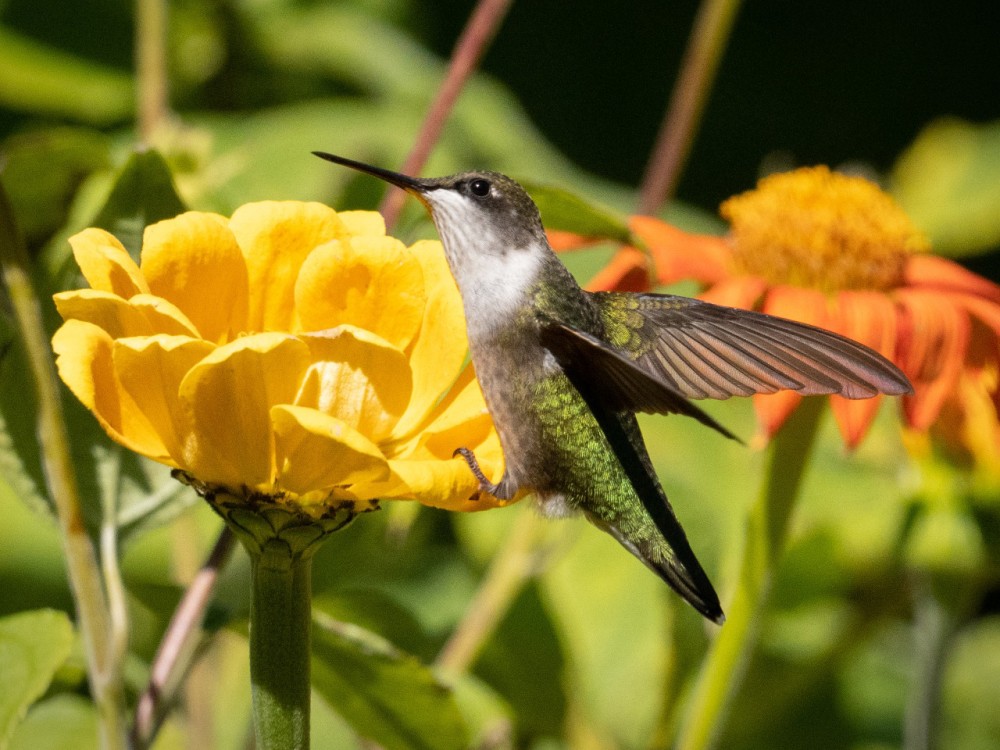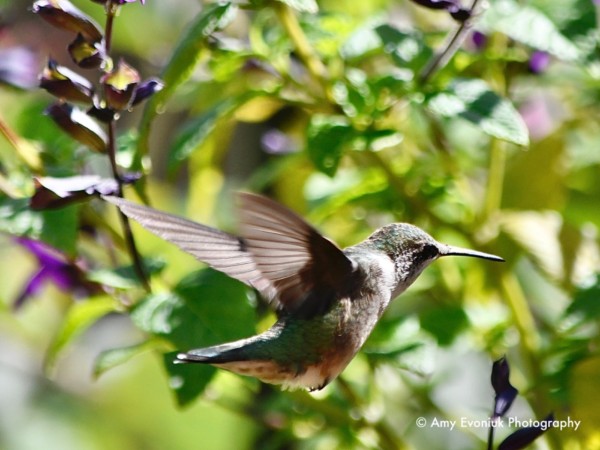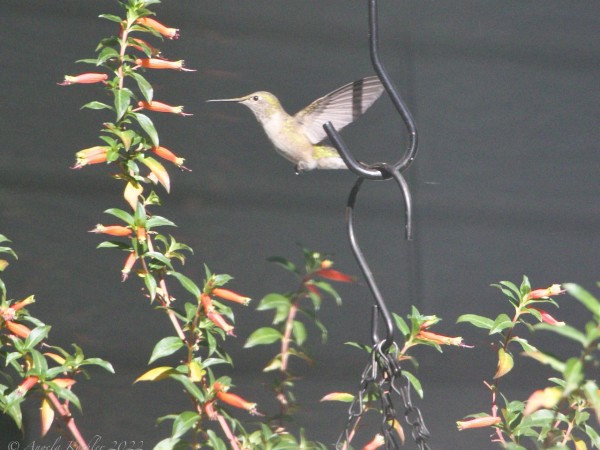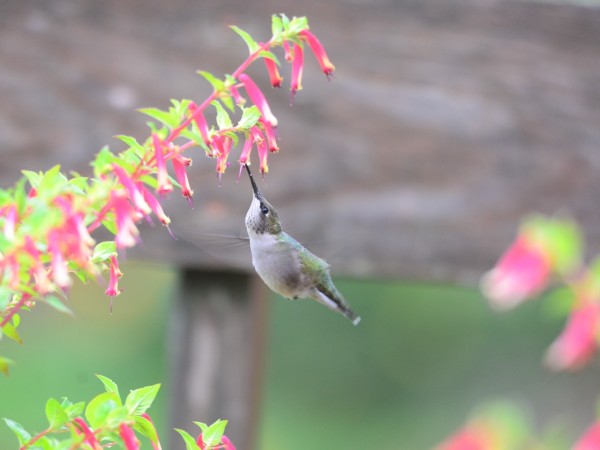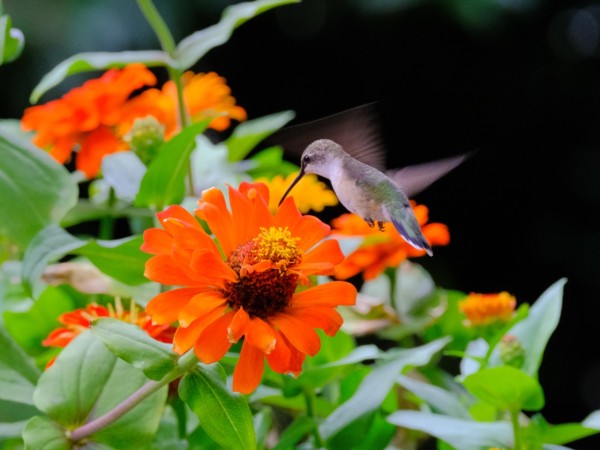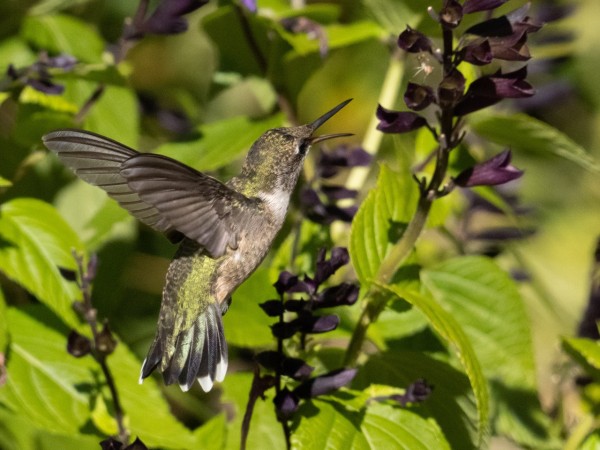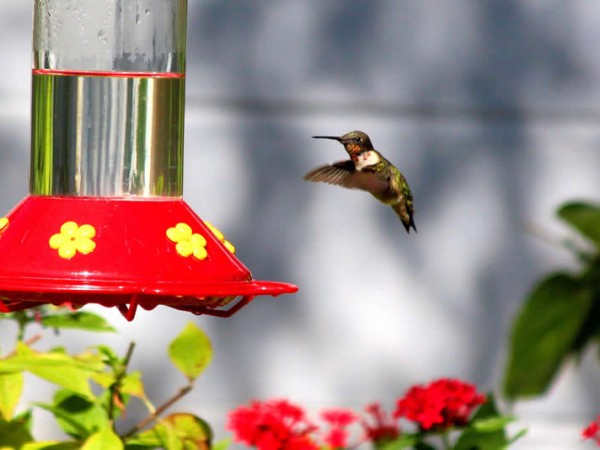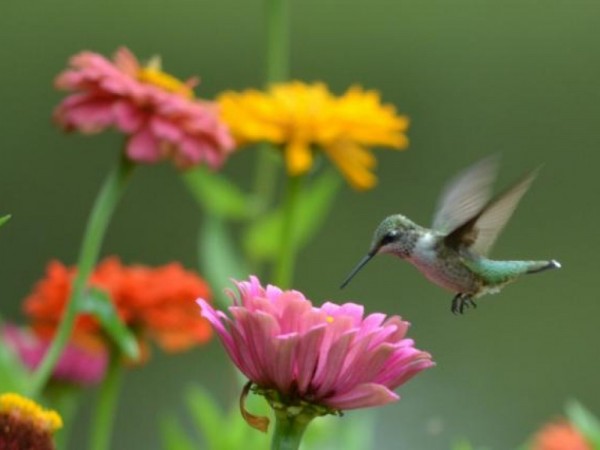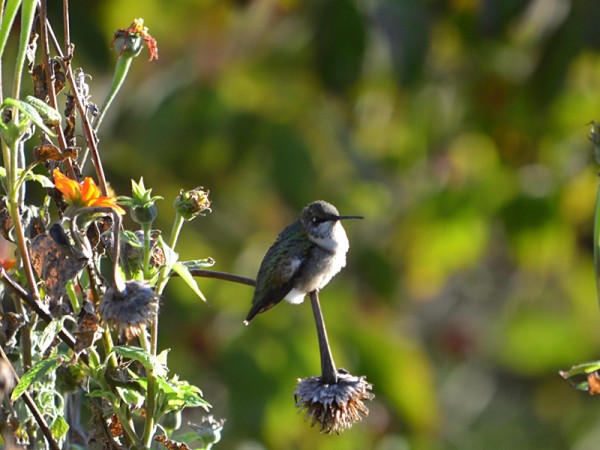Hummingbirds on the Move
Hummingbird migration is in full swing. As fall progresses, temperatures drop and daylight length shortens. Many adult males have already headed south and more females and juveniles are following suit. Keep reporting your observations to Journey North!
Females and Juveniles Being Observed in the North
Reports of hummingbirds in Southeastern Canada, the Northern U.S., and parts of the Western U.S. are dropping, but some females and juveniles remain. Individuals sticking it out in or passing through northern climates are eating voraciously to gain calories and trying to cope with colder temperatures. Only a few nectaring flowers remain. Keep your feeder up for the stragglers. Don’t be concerned: Your feeder will not cause hummingbirds to stay longer than they should.
Nancy in Georgian Bluffs, ON: "One lone female still at our feeder. Hopefully getting ready to begin her journey soon." (09/26/2022)
Amy in Newburgh, IN: "All the activity was on the flowers today. Ruby-throated Hummingbird sipping nectar on the purple salvia.The nights are very chilly, down in the 40’s. Every morning I wonder if there will be any hummingbirds." (09/29/2022)
Angela in Elizabeth, CO: "Black-chinned female/immature. She showed up on the 24th of Sept. and has been here since today... Sept. 29th. Feeding on hummingbird flowers, and also from feeders!" (09/29/2022)
Bernice in Mountain Top, PA: "Looks like this Juvenile is packing on some weight. First he flew to the honeysuckle vine and nectared on every flower, then moved to the potted plants on my deck. " (10/02/2022)
Fluctuating Numbers Farther South
From Texas to Tennessee, migratory activity levels vary throughout the Southern U.S. Some Journey North volunteers are reporting a surge in sightings, while others are seeing numbers drop.
James in Leakey, TX: "There are about 15-20 Hummingbirds around our 5 feeders this morning . . .Out of the 15-20 there were probably 5-6 male rubies, one male rufous and the rest female rubies." (09/26/2022)
Diana in Winston, GA: "Had 3 regulars this morning, now only seeing two. One of the ones left is still quite a bit smaller.Most left the beginning of last week.Haven’t seen the male in two days." (10/01/2022)
Chris in Knoxville, TN: "Two females seen today, fighting over the feeders as always. It was nice to see two, though I was only able to take a picture of one at a time, this one near some late-blooming zinnias I have on a stand near the feeder. Oct 9, 2021 was the last sighting I had last year." (10/02/2022)
Adult Males
Reports of adult males are declining. Are you still observing adult male hummingbirds? If so, we encourage you to report your observations under the category Fall: Hummingbird Sighting (Adult Male). These reports allow researchers to better determine “last seen” dates.
Not Just Nectar on the Menu
Hummingbirds feed on small insects and spiders to obtain vital protein they can't get from nectar. One Journey North volunteer captured an in-action shot of this behavior:
Marjorie in Lowell, MI: "Hummingbird with open beak about to have a spider snack. The small spider is visible (light tan color) in the salvia stem on the upper right." (10/03/2022)
Hurricane Ian
Journey North is thinking of the people and wildlife affected by Hurricane Ian. Migration is already a perilous time of life for hummingbirds, and extreme weather events add more challenges. In the aftermath of Ian, we hope communities can recover and all migratory wildlife safely reach their overwintering habitats. Stay safe.
Keep Reporting
Keep reporting until you see your last hummingbirds of the season. Migration is going by fast! Thanks for all you do on behalf of hummingbird tracking.

